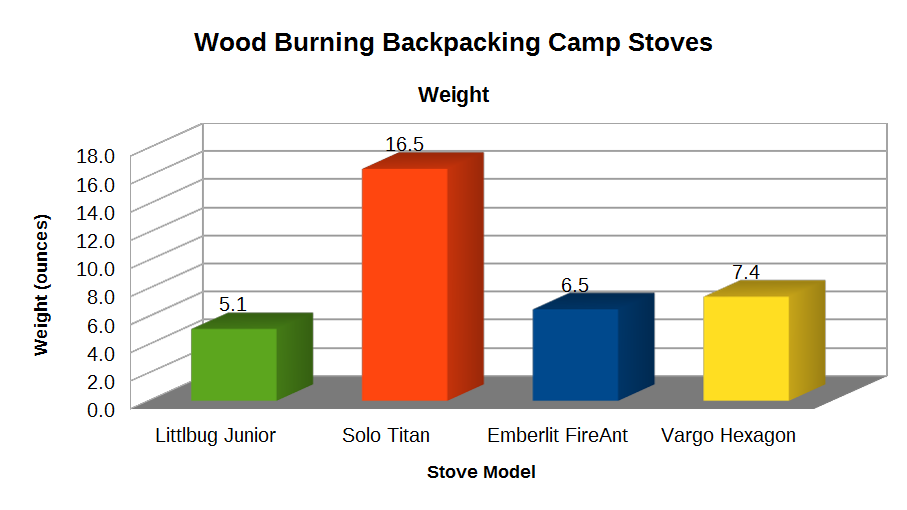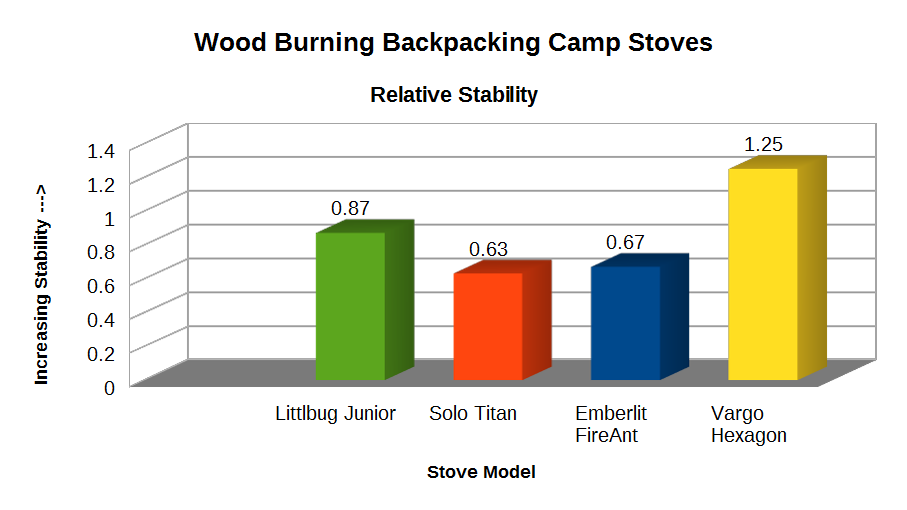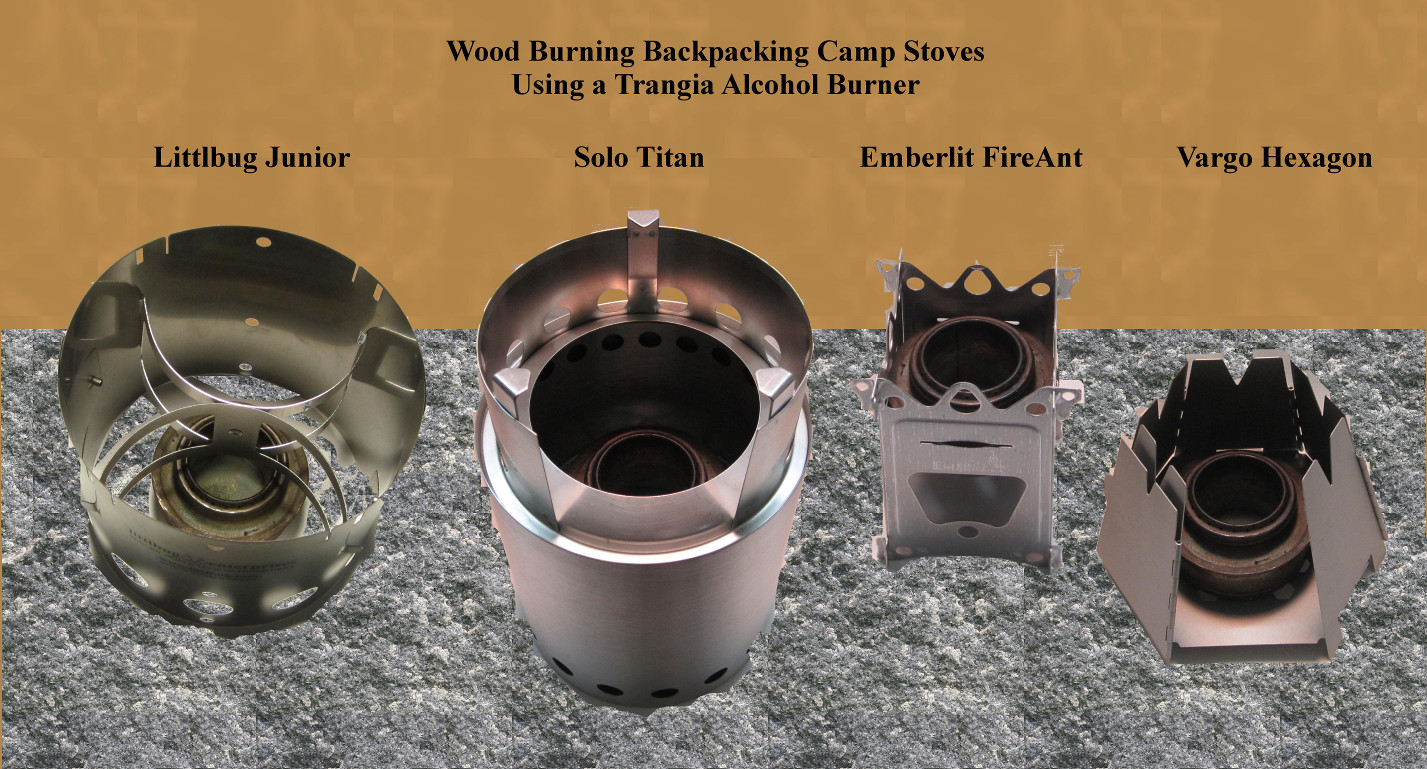- Home
- The Littlbug Blog
- Comparing Wood Burning Backpacking Camp Stoves | What's Important and Why It Matters (Part Four)
Recent Posts
Comparing Wood Burning Backpacking Camp Stoves | What's Important and Why It Matters (Part Four)
Posted by on
In this collection of posts I am presenting 20 considerations that are important when choosing your wood burning backpacking camp stove and showing how these considerations are dealt with in four different stove designs available on the market today.
In this post I will compare the weight, stability, boil time, size and accessibility of the fuel port, ease of assembly and multi-fuel options of the Littlbug Junior, Solo Titan, Emberlit FireAnt and Vargo Hexagon wood burning backpacking camp stoves.
Getting ready to buy a stove and want to read the complete article now? Just send us your request via our contact page and we will send it to you.
Consideration 5 - Weight: Because you're the one carrying it and it all adds up. One of the first things I learned backpacking is that the more I carried, the less I enjoyed the walk

Figure 5
|
Littlbug Junior |
Solo Titan | Emberlit FireAnt | Vargo Hexagon | |
| Material | Stainless Steel | Stainless Steel | Stainless Steel | Stainless Steel |
| Weight | 5.1 oz | 16.5 oz | 6.5 oz | 7.4 oz |
Table 5
Height: How tall is your stove? This determines your stove's center of gravity. The higher your pot is above the ground, the greater the possibility of your stove tipping over.
Width: How wide is the base of your stove? The wider the base of your stove, the greater the possibility of your stove not tipping over.
How to Compare: A tall stove with a narrow base is less stable than a short stove with a wide base. Comparing the base of your stove to its height gives you a numerical way to compare the relative stability of different stoves.

Figure 6
|
Littlbug Junior |
Solo Titan | Emberlit FireAnt | Vargo Hexagon | |
| Relative Stability 1 |
Base/Height
0.87 |
Base/Height
0.63 |
Base/Height
0.67 |
Base/Height
1.25 |
1A higher number indicates greater stability.
Table 6
Consideration 7 - Boil Time: How long do you want to wait for supper?
|
Littlbug Junior |
Solo Titan | Emberlit FireAnt | Vargo Hexagon | |
| Boil Time1 | 4-6 min/ 32 oz | 4-6 min/ 32 oz | 5-6 min/ 16 oz | 7-8 min/ 16 oz |
1Taken from each company's website if available (Littlbug and Solo) or independent reviews (Emberlit and Vargo). Keep in mind that these tests were done by different people under different conditions (type of pot, type of wood, water starting temperature, air temperature, wind conditions …)
Table 7
Consideration 8 - Size and Accessibility of Fuel Port: Think safety and convenience. How does the size of your favorite pot affect access to the fire box? Stoves designed to feed sticks into the side of the stove (Emberlit and Vargo) will not have accessibility issues with your pot. Stoves with an open top feed (Littlbug) provide adequate access for pots of various size but the access will diminish when you use a larger pot. Top fed stoves with less than ¼ of the top open (Solo) are difficult to get fuel into the stove when using larger pots.
Consideration 9 - Ease of Assembly: You don't want to spend a lot of time putting your stove together every time you use it and if you're winter camping, you shouldn't have to take your gloves off to put it together. Three of the stoves in this comparison took less than 10 seconds to assemble (Solo, Vargo and Littlbug). One stove took longer (Emberlit).
|
Littlbug Junior |
Solo Titan | Emberlit FireAnt | Vargo Hexagon | |
| Ease of Assembly 1 | 3 | 1 | 4 | 2 |
1Lowest number indicates easiest to assemble.
Table 9
Consideration 10- Multi-fuel Options: When the risk of wildfire is high, you may encounter fire bans. If your stove has multi-fuel capability you can still use it. The predominant multi-fuel choices for these stoves are alcohol or solid fuel tablets. Two of the stoves in this comparison are designed to accommodate the differences in fuel types (Littlbug and Emberlit). Littlbug allows you to use the body of your stove as a wind screen for both your pot and fuel source by flipping the pot supports over to place them lower in the stove. Emberlit raises the fuel source closer to the pot by adding a platform (for solid fuel) or securing an alcohol burner into 4 slots near the top of the stove but keeps the pot exposed to the wind. The Emberlit configuration fits only one size alcohol burner and the Littlbug design will accommodate a wide range of commercial and DIY burners. Littlbug also offers an optional pot sling which gives you the ability to adjust the distance between the pot and your fuel source for optimal efficiency. Two of the stoves in this comparison have you put your fuel source on the floor of the firebox and keep the pot exposed to the wind (Solo and Vargo). Two of the stoves in this comparison provide enough room to use a simmer ring if your alcohol burner has one (Littlbug and Vargo).
Wood Burning Camp Stoves Also Work with Alcohol Burners

Figure 10-1
Littlbug Offers Additional Options for Using an Alcohol Burner

Figure 10-2
In my next posting of Comparing Wood Burning Backpacking Camp Stoves | What's Important and Why It Matters, I will be discussing the pot supports, wind and cold weather performance and the durability and craftsmanship of your stove. In your search for the backpacking stove that's right for you, I hope you end up choosing a Littlbug Stove! You can check out our products here.

 Loading... Please wait...
Loading... Please wait...








